Eukaryotic Diversity Midterm
1/180
Earn XP
Description and Tags
Name | Mastery | Learn | Test | Matching | Spaced |
|---|
No study sessions yet.
181 Terms
Address the misconception of “evolution as progress”
evolution does not inherently lead to increased complexity or advancement. It is true that organisms on average have become more complicated, but there are lots of examples where they become LESS complex
the meaning of nodes in a phylogeny
indicate the most recent common ancestor and the age of divergence event
Trace ancestry backwards from living taxa
To find the most recent common ancestor of a set of taxa on a phylogenetic tree, follow each taxon’s lineage back in time (towards the base of the tree) until all the lineages meet up.
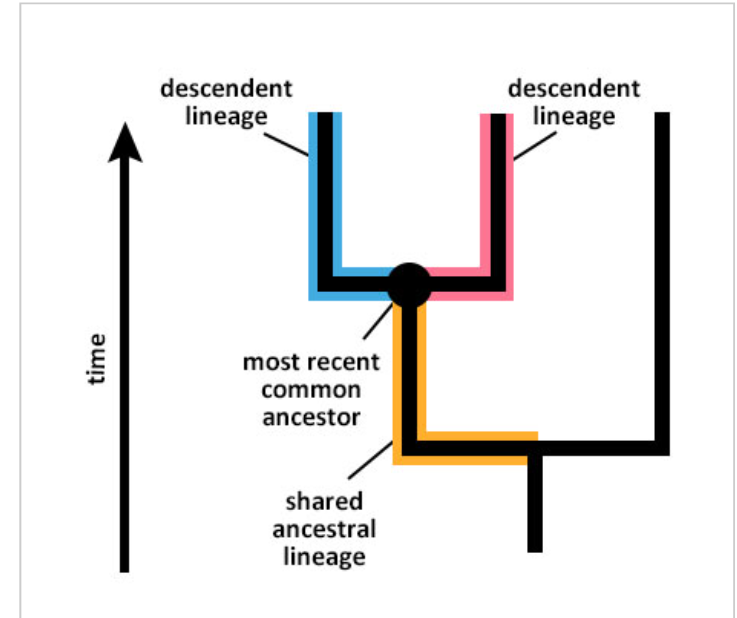
Interpret the mapping of traits onto a phylogeny (in terms of homology)
involves identifying shared characteristics between species due to common ancestry.
Describe convergent evolution
similar structures evolve independently in different organisms
Relate taxonomic classification to phylogeny
taxonomic classifications aim to reflect evolutionary relationships depicted in phylogenetic trees
Explain how surface area: volume ratios change with size, and the relevance of SA:V ratio for the evolution of body shapes
The more SA, the more things (gas exchange, nutrient gain, signal reception) the cell can do!
• The need of the cell (or organism) is based on volume
• The ability to supply that need is based on the surface area
Aka, the bigger you get, the harder it becomes to supply the need
The lower the SA:V ratio, the lower the metabolic rate
Give the dates of origin of earth
4.6B years ago
Give the dates of origin of prokaryotes
3.5B years ago
Give the dates of origin of unicellular eukaryotes
2.1BY
Give the dates of origin of multi-cellular eukaryotes
1.5BY
Explain what is meant by bio-prospecting and its importance to different types of human cultures
exploration of natural resources for commercially valuable products
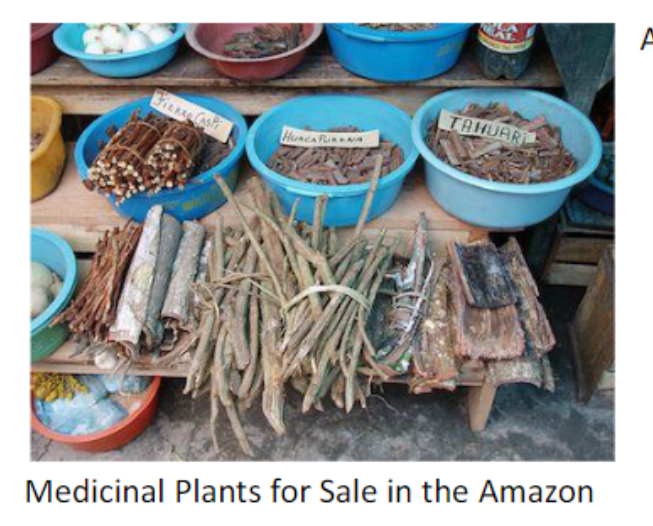
Describe cultural impacts of biodiversity
Cultural values of biodiversity encompass aesthetic, spiritual, recreational, educational, inspirational values
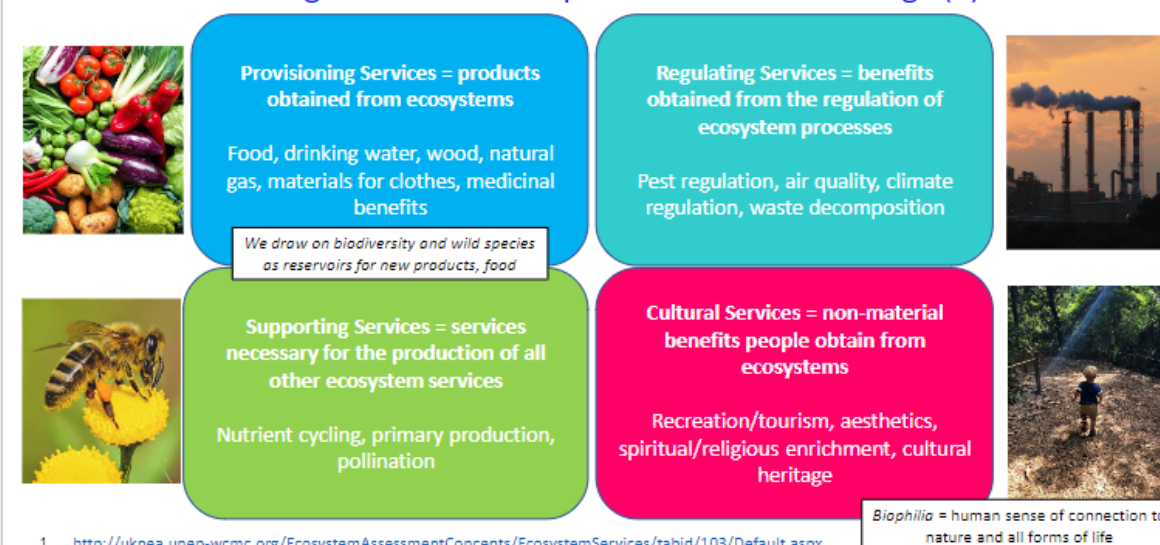
Recognize that some types of organisms have only a small proportion of their species identified
One of our biggest problems when it comes to biodiversity: we don’t really know how many species are out there
Interpret data and explain some human impacts on biodiversity
The arrival of humans to new locations often correlates to high extinction rate (humans were good hunters!)

Explain the importance of museums, herbaria, and citizen science in documenting biodiversity.
Repositories of Diversity allow us to preserve information; such as Museums (all life forms, contain a lot more than what the public sees), herbaria and citizen science projects (crowd sourcing science!)
Explain how our classification of organisms has changed to reflect our growing understanding of the evolution and diversity of life
From “Scala Naturae” with linear organization to Carl Linnaeus’s nested hierarchy to classify living things (“folders within folders”)
Classification is now based on evolutionary history—no longer humancentric!
Distinguish between the five kingdom and three domain schemes for classifying life
Robert Whittaker proposed the FIVE kingdom classification of life. Plantae, Fungi, Animalia, Protista (trash taxon) and Monera
Carl Woese (1928-2012): With others, and based on ribosomal RNA molecular data, split prokaryotes (Kingdom Monera) into two groups (Archaea & Bacteria)
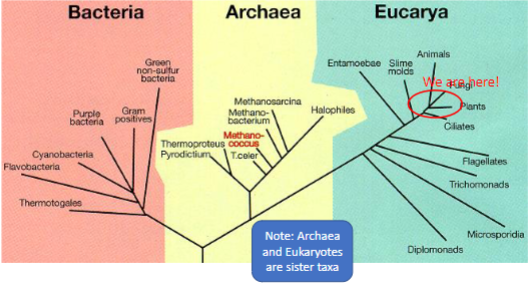
identify short-comings of the five-kingdom approach
It does not reflect the true evolutionary relationships among organisms, as it does not account for molecular data. Protista is a trash taxon. It fails to adequately represent microbial diversity
Describe three ways eukaryotes obtain energy and nutrients
Animals-ingestion
Plants-photosynthesis
Fungi-absorption
sexual reproduction
gametes fuse together to produce a zygote
asexual reproduction
reproducing through mitosis, making genetically identical copies
• Vegetative (budding) = grow a copy
• Parthenogenesis = produce eggs asexually that are exact copies of mother’s genes
diplontic
diploid dominant, multicellular. Only eggs/sperm are haploid (most animals)
haplontic
haploid dominant, multicellular. Only zygote is diploid (most fungi, some others)
alternation of generations life cycles
multicellular haploid and diploid stages (plants, some others)
anisogamy
different in morphology
Plant and animal gametes are anisogamous
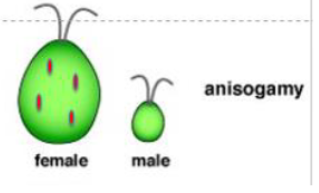
isogamy
“equal gametes” (ex: fungi)
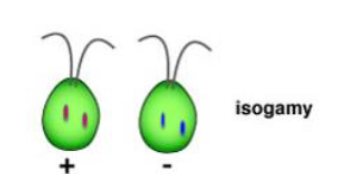
Monoecious
both ovaries and testes occur in the same individual
Dioecious
organisms have either male or female reproductive organs
Briefly describe how small organisms live in a different “world” relative to large organisms in the context of diffusion
Small organisms have to move small amounts of substances relatively short distances. Vulnerable to changes in the environment or a chemical attack
Briefly describe how small organisms live in a different “world” relative to large organisms in the context of support
• The need for support is proportional to mass (volume)
• The strength of support is proportional to surface area
• Structural support is a lot ‘easier’ for small organisms (high SA:V)
Briefly describe how small organisms live in a different “world” relative to large organisms in the context of terminal velocity
Large individuals have low drag and is unable to reach terminal velocity while small organisms have a low terminal velocity
Briefly describe how small organisms live in a different “world” relative to large organisms in the context of Reynolds number
Large organism have large re number
small organism have small re number
Name the five Eukaryotic supergroups
1)Excavata = unicellular, some photosynthesis
(2)Chromalveolata = all levels of complexity, some photosynthesis
(3)Rhizaria = amoebas with shells, unicellular, mostly no photosynthesis
(4)Archaeplastida = first to evolve chloroplasts, plants, all photosynthesis, all levels of complexity
(5)Unikonts = include fungi and animals, all levels of complexity, no photosynthesis
Explain what is meant by a primary endosymbiotic event and its importance for the evolution of eukaryotes.
explains the origin of chloroplasts and mitochondria in eukaryotic cells, a view popularized by Lynn Margulis
1st primary endosymbiosis gave rise to mitochondria
The 2nd primary endosymbiosis gave rise to photosynthetic plastids
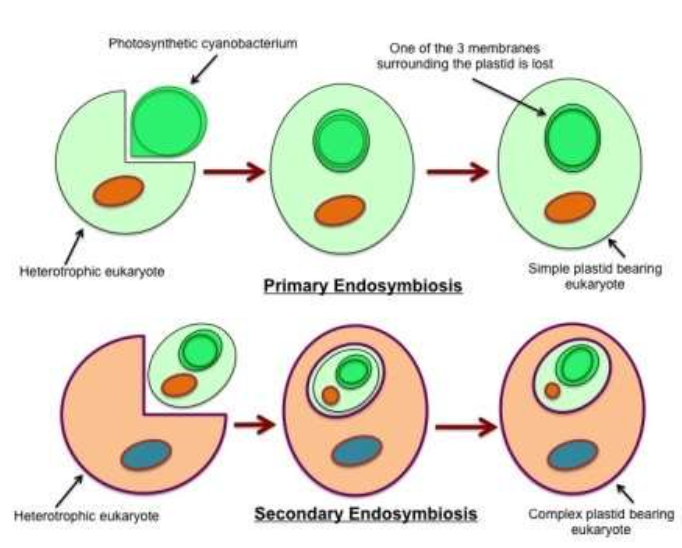
Provide basic characteristics and examples of the group Excavata
unicellular, some photosynthesis
Parasitism often leads to reduced or lost structures (but gain of others)
Giardia (untreated water), Pelomyxa (lives in mud), Trichonympha (gut mutualist of termites), Trichomonas vaginalis (STD), Trypanosoma (African sleeping sickness, by tetse fly vector), euglena (secondarily acquired the chloroplasts)
Provide basic characteristics and examples of the group Chromalveolata (Alveolates)
diverse unicellular organisms
Dinoflagellates (an important component of marine plankton, secondary symbiosis, red carotenoid for photosynthesis. RED TIDE. Some are called zooxanthellae and are mutualistic photosynthetic endosymbionts of corals)
Apicomplexans (parasites with intricate life cycles, Plasmodium causes malaria, Toxoplasma gondii causes toxoplasmosis between cats and rats)
Ciliates (have microtubules, cilia, oral groove, macronuclei for required for survival/metabolic activities and micronuclei for genetic storage/ reproduction example: Paramecium)
Ciliates pseudo-sexual reproduction
Two different mating types form a cytoplasmic bridge.
Meiosis produces four haploid micronuclei, three of which disintegrates
each remaining micronucleus divides by mitosis
The conjugate pair swaps micronuclei
The haploid micronuclei fuse. forming a diploid micronucleus
The micronucleus undergoes three rounds of mitosis, producing eight micronuclei
The original macronucleus disintegrates, and four of the micronuclei become macronuclei
Two rounds of cell division produce four daughter cells
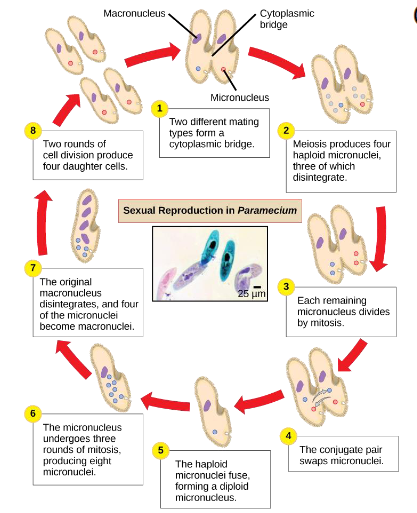
Conjugation
sexual process that produces genetic variation when two cells exchange haploid micronuclei that were formed from a diploid micronucleus by meiosis (NOTE: no reproduction of new cells/”offspring”!
Provide basic characteristics and examples of the group Chromalveolata (Stramenopiles)
mostly photosynthetic algae
Diatoms (have a 2-part silica wall, a major component of marine phytoplankton, used in filters and polishes)
Brown algae ( large, common,*multicellular independently , kelp, Photosynthetic with brown carotenoid pigments, gas bladders, exploited as a source of alginates)
Oomycetes (water “molds”, white rusts, downy mildews, plastids lost, cause of potato blight/Irish potato famine)
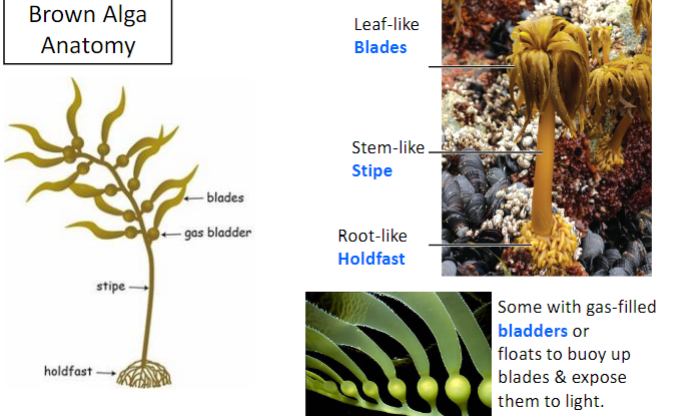
Brown Algae life cycle
alterations of generation
a 2n sporophyte (“seaweed”) produces n spores by meiosis that grow into n gametophytes that produce n gametes by mitosis that fertilize to form a new seaweed (2n sporophyte)
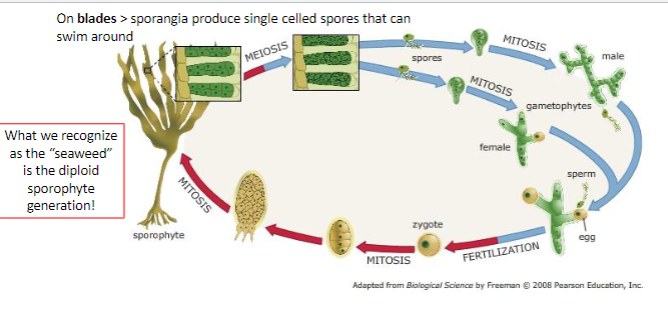
Rhizaria
many are “amoebas” with threadlike pseudopodia used to move & to capture prey
1. FORAMS (= “foraminiferans”): pseudopodia extend through a porous CaCO3 shell or “test”
2. RADIOLARIANS: pseudopodia radiate outward from a silica “shell”
NOT the amoeba we normally think about!
Provide basic characteristics and examples of the group Rhizaria
amoebas with shells, unicellular, mostly no photosynthesis
Distinguish between primary and secondary endosymbiosis in the evolution of chloroplasts and photosynthesis
primary endosymbiosis represents the initial establishment of the chloroplast symbiosis between a eukaryotic host and a cyanobacterial endosymbiont, while secondary endosymbiosis involves subsequent endosymbiotic events where eukaryotic hosts engulf other eukaryotic cells containing primary plastids
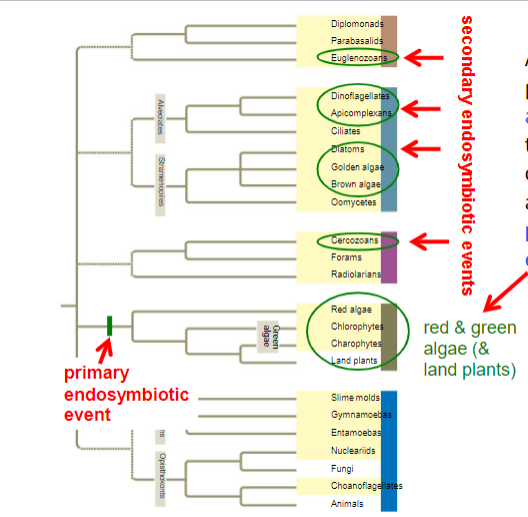
Distinguish between true multicellularity and colonial organisms
multicellular- the organism’s cells arose from a single cell (e.g., zygote) by cell division & are therefore genomically equivalent, cells remain attached, and a single cell would die on its own if it were removed, there is specialization among cells (“division of labor”)
Colonial- Cells may be genetically distinct, May attach in colonial filaments etc. but are capable of surviving on own, No specialization
Archaeplastida
first to evolve chloroplasts, plants, all of them photosynthesize , all levels of complexity
Provide basic characteristics and examples of the major groups of red algae
mostly marine & multicellular, red photosynthetic pigment, phycoerythrin, absorbs blue light & transfers energy to chlorophyll. Blue light penetrates deeper so red algae can grow deeper. Reproduction resembles alternation of generations. Red algae is eaten as eaten as sushi wraps (nori) & dulse. Its also a source for agar
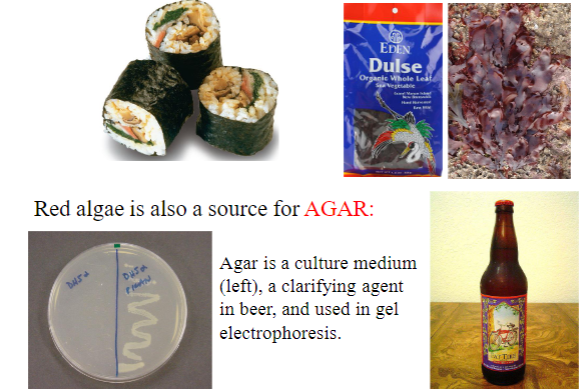
green algae two groups
Charophytes and Chlorophytes
green algae is a paraphyletic group, some unicellular, some multicellular, some colonial
some are symbionts with fungi to form lichens
Provide basic characteristics and examples of the major groups of Chlorophytes
exhibit diverse life cycles
example: Chlamydomonas – unicellular. Different species can be isogamous or anisogamous
Ulva – multicellular Alternation of generations Sporophyte and Gametophyte look the same
Provide basic characteristics and examples of the major groups of Charophytes
the sister taxon to land plants
land plants and charophytes share a unique way of synthesizing cellulose in their cell walls and phragmoplast forms during cell division
Provide basic characteristics and examples of the major groups of embryophytes
Land plants share key traits only with some charophyte green algae
Describe the historical significance of land plants (embryophytes)
their role in terrestrial colonization, oxygenation of the atmosphere, formation of soil, biodiversity, and evolutionary history.
Compare the life cycles and habitats of green algae to land plants
some algae have a haplontic life cycle and are predominantly aquatic, plants have adaptions to live on land and therefore are predominantly terrestrial
Describe the derived traits unique to land plants
1. An alternation of generations life cycle (present in some brown & green algae, but not charophytes)
2. Sporangia that produce walled spores
3. Gametangia (female archegonia & male antheridia that make egg & sperm gametes, respectively)
4. “Dependent” embryos (hence “embryophytes”)
5. Apical meristems (regions of mitotic cell division at root & shoot tips)
archegonia
produce ONE egg each. This is where fertilization occurs.
antheridia
produce & release MANY sperm
Know what the apical meristem is
regions of mitotic cell division at root & shoot tips
Recognize the embryophyte phyla and categorize these groups into: non-vascular, seedless vascular, or seeded vascular
1. Non-vascular bryophytes (3 phyla: liverworts, mosses, hornworts)
2. Seedless vascular plants (2 phyla: lycophytes: club mosses, spike mosses, quillworts pterophytes: ferns, whisk ferns, horsetails)
3. Seeded vascular plants (Gymnosperms, 4 phyla)(Angiosperms: Phylum Anthophyta)
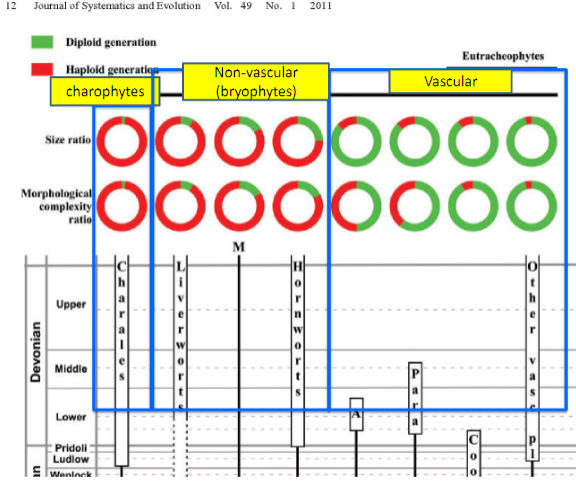
What trends do you notice in regards to the size of diploid/haploid stages?
We get bigger and more complex diploids as we get higher complexity
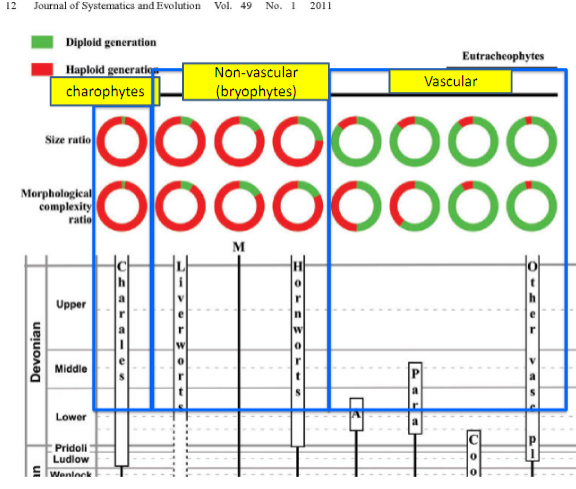
Which groups exhibit greater diploid complexity?
Vascular plants (we can’t get bigger if we don’t have vascular tissue)
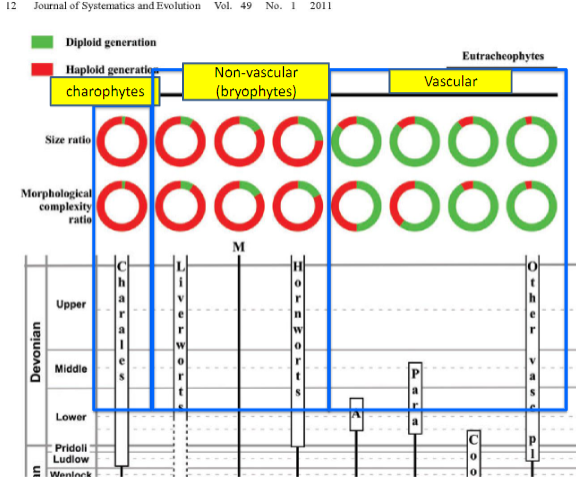
Given this, what is the overall trend we see here?
We trending towards diploidy, we tend towards higher complexity of diploids and lower complexity of gametophytes ( in vascular plants, gametophytes are only a few cells)
Describe examples and characteristics of Bryophytes as shown in class.
Bryophyte” is an informal term to refer to the three phyla of non-vascular land plants: liverworts, hornworts, mosses
not a monophyletic group
Liverworts (flattened, leafy, liver-shaped, Sporophytes are really small)
Hornworts (Elevated sporophyte capable of photosynthesis looks like a horn)
Mosses (More common! Elevated sporangia (capsules) help disperse spores)
Spanish moss and deer moss is
not acutally moss!
Explain the life cycle of a moss, relating structures and stages to the basic alternation of generations life cycle
diploid sporophytes are short-lived & present only part of the time. Their only function is to make spores
Start with a temporary 2n
sporophyte: grows out of
the top of a gametophyte
produces n spores by MEIOSIS in a
sporangium (capsule)
Spores land & germinate to produce protonemata (= early gametophytes) grows into a
mature male or female gametophyte via mitosis
Archegonia in female n
gametophytes produce 1 n egg by MITOSIS; antheridia in male n gametophytes
produce & release many n flagellated sperm by MITOSIS
The new diploid zygote (fertilized egg) is “dependent” on & protected in
the archegonium of the gametophyte & grows by mitosis into an embryo
& a new 2n sporophyte
*Some bryophyte species can also reproduce asexually by fragmentation
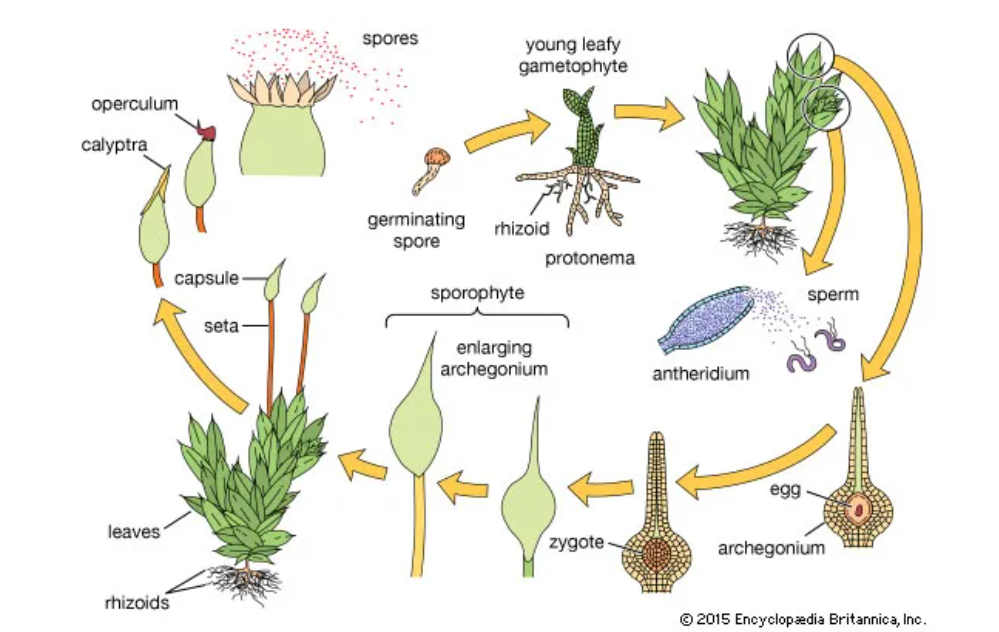
Bryophyte Ecological importance
• Some spp. colonize bare sandy soil & prevent nitrogen from leaching out of soil essential for plant growth).
• Some are “pioneer species” in primary succession: they colonize bare rock & help create soil
• peat bogs are an important reservoir for organic carbon (helps reduce atmospheric CO2 & global warming)
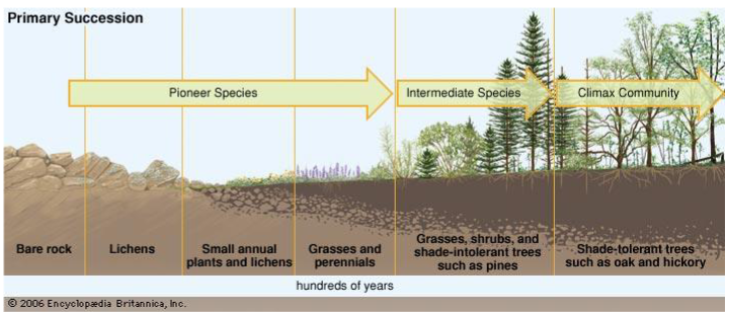
Explain the economic importance of peat
layers of compacted Sphagnum are harvested & used for fuel, especially in Ireland & Canada, used for as a soil additive and preserve human remains
Describe the two types of vascular tissue and their function
Xylem transports water
Phloem transports nutrients
Know that vascular plants grew to great size and formed forests during the Carboniferous period
vascular plants began to diversify ~350 MY ago in the Carboniferous
These forests produced the coal we burn today.
Why is vascular tissue so important?
Know that vascular tissue allows plants to grow much taller
Know that vascular tissue allows for the evolution of true roots that transport water and nutrients from the soil, and more complex leaves
How do seedless vascular plants compare to bryophytes?
Like bryophytes, seedless vascular plants have flagellated sperm (that must swim to an egg) & therefore are mostly restricted to moist, shaded habitats
All seedless plants rely on sperm to swim to archegonia
Compare microphylls and megaphylls and describe which phyla have each
Microphyll leaves: usually spine-shaped with a single leaf vein. Found in only 1 group of seedless vascular plants: the lycophytes
Megaphyll leaves: have multiple veins. Found in Pterophyta
Explain the fern life cycle, pointing out similarities and differences to the life cycle of moss
1. Start with the 2n sporophyte: Haploid (n) spores are produced by meiosis in clusters of sporangia called
SORI.
2. Each spore undergoes mitosis into a very reduced, low-
to-ground haploid gametophyte. It produces BOTH antheridia & archegonia which produce sperm & egg gametes by mitosis
3. After fertilization the 2n embryo develops into a new sporophyte (growing out of the tiny gametophyte)
Similar to bryophytes, the sperm needs to swim to the archegonia
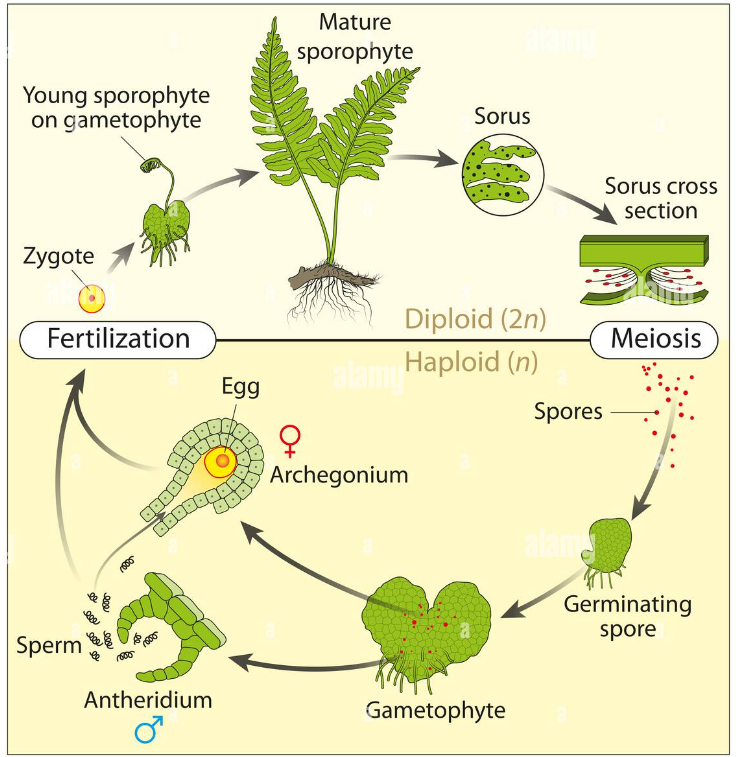
Are ferns heterosporous or homosporous ?
ferns are homosporous
Describe characteristics and examples of Lycophytes and Pterophytes as described in class
Lycophytes: club “mosses”, spike “mosses” & quillworts
Pterophytes: ferns, horsetails, whisk ferns,
Map the evolution of microphyll and megaphylly leaves to the evolution of plants
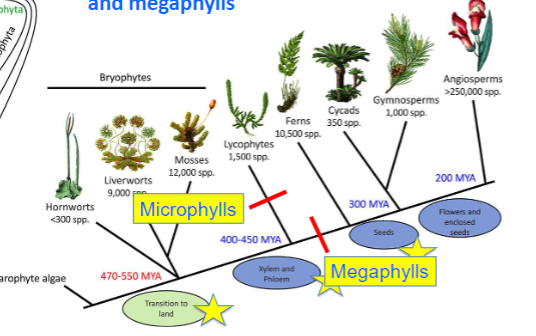
Describe the ecological/economic importance of seedless vascular plants
1. The extensive Devonian & Carboniferous forests of lycophytes & pterophytes REMOVED atmospheric CO2 & may have contributed to global cooling at the end of the Carboniferous & later glaciation.
2. The decaying plants of these Carboniferous forests eventually became compacted, then heat & pressure converted this to the COAL we burn today
Draw and label the basic structure of a seed
sporophyte embryo surrounded by maternal tissue
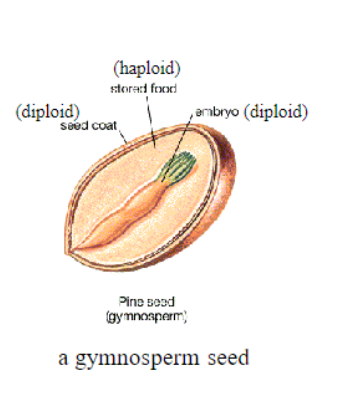
heterosporous
each spore produces either a male or a female gametophyte
homosporous
each spore produces a gametophyte with both archegonia and antheridia
megaspore
female haploid (n) (produced via meiosis in a 2n megasporangium) divides by mitosis to become a female n gametophyte that will produce an n egg cell (by mitosis)
microspore
male haploid (n) (produced via meiosis in a 2n microsporangium) divides by mitosis to become a male n gametophyte that will produce n sperm cells (by mitosis)
ovule
structures in a parent 2n sporophyte that contain an outer 2n protective integument and 2n female megasporangium cells which produce the female n megaspore (via meiosis)
pollen grain
contain haploid (n) male gametophytes also much reduced in size that that are protected & widely dispersed & will produce n sperm (by mitosis)
Describe the traits all seeded vascular plants share
1. an independent, dominant sporophyte (2n) phase in their life cycle (the haploid gametophyte phase is very reduced and transient).
2. seedless vascular plants have vascular tissue to transport water, minerals, and nutrients
3. xylem cell walls strengthened with lignin. This provides structural support to stems & allows vascular plants to grow tall without wood
4. roots to anchor plant (allowing greater height) and to absorb water & nutrients from soil
5. true leaves to capture light for photosynthesis
Describe the evolutionary advantages of the seed/pollen system for life on land
Reduced (microscopic!) & protected gametophytes (in ovules & pollen grains) & seeds were very successful terrestrial adaptations that enabled seed plants to become the dominant plants on land, out-competing bryophytes & seedless vascular plants
Pollen (which contains sperm) can be more widely dispersed (by wind)
Sperm don’t need water in which to swim (so seed plants can live & reproduce in many more land habitats)
Seeds protect, disperse, and initially feed sporophyte embryos
Seeds allow some sporophyte embryos to remain dormant for years awaiting favorable conditions.
Explain why the term “gymnosperm” refers to “naked seed”
with “naked” seeds; i.e., not in ovaries
Are pine trees monecious or diecious
monecious
Describe the components of the gymnosperm life cycle
Each 2n male pollen cone contains many 2n microsporangia holding 2n microsporocytes (cells) that undergo meiosis to produce n microspores.
Each n microspore grows (by mitosis) into a n pollen grain & contains the n male gametopyhyte (which will later produce sperm via highly reduced antheridium).
Each “scale” of a 2n ovulate cone contains two 2n ovules, each with an outer protective 2n integument & each with a micropyle opening (where a pollen grain will enter)
→Each 2n ovule has a 2n megasporangium with a 2n megasporocyte cell that produces a n megaspore by meiosis
The n megaspore in the ovule develops into a n female gametophyte with an n archegonium that produces an n egg by mitosis
Pollination occurs when WIND carries an n pollen grain to a female cone, where it enters an ovule’s micropyle opening & the pollen grain’s male n gametophyte grows a pollen tube delivering two haploid sperm produced by mitosis
After fertilization, the whole ovule becomes a SEED
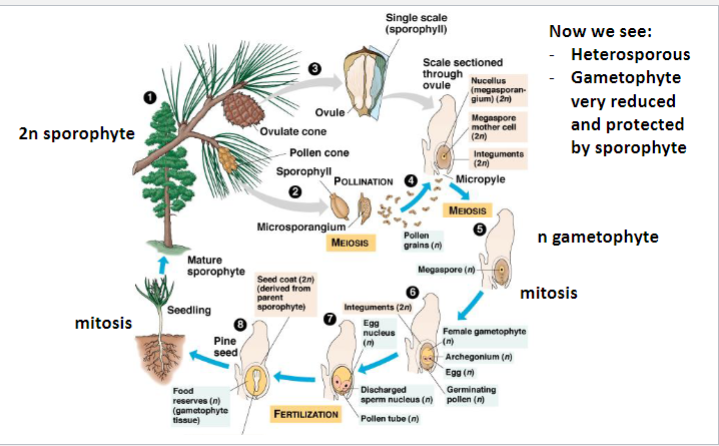
Recognize the four phyla of gymnosperms as well as the importance of local representatives of conifers mentioned in class
Conifers- pines, redwoods, junipers, cypress, & “Christmas trees” such as spruces & firs (local Gopher wood and Florida Yew used to make Taxol)
Cycads- They are dioecious (male & female cones on separate plants) with palm-like leaves
Ginko- this species is dioecious, and today male plants are widely planted as a landscape tree
Gnetophytes-Welwitschia includes a single species from the Namib desert that grows very slowly & has some of the largest & long-lived leaves
Are cycads and gingkos, gnetophytes diecious or monoecious?
diecious
Recognize and describe basic information about local cycads and Gingko
local cycads- All over campus & FL yards, Zamia pumila
Ginkgo- from China, The female seeds, as they rot, smell like rancid butter & so female trees are avoided for plantings
Recognize Welwitschia and Ephedra and representative of
Gnetophyta
Identify angiosperms on a phylogeny depicting embryophytes
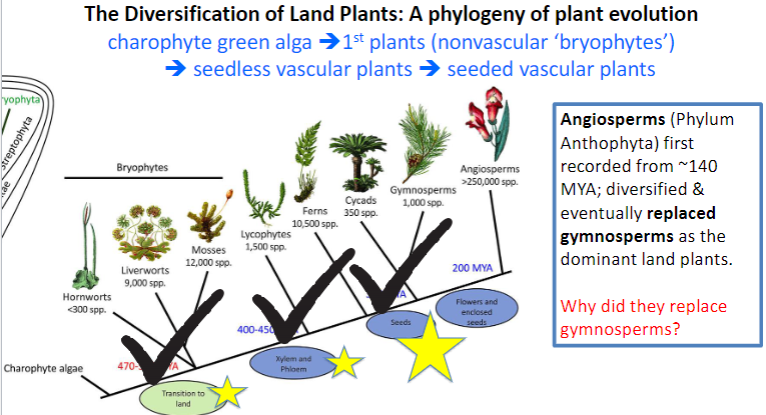
Describe the 5 derived characteristics of seed plants that angiosperms share with gymnosperms
reduced gametophytes (microscopic male and female gametophytes)
Heterospory (microspore give rise to a male gametophyte while megaspore give rise to a female gametophyte)
Ovules
Pollen (pollen grains make water unnecessary for fertilization
seeds (survive better and can be transported long distances)
Label and describe the basic structure of the angiosperm flower
Flowers are modified leaves made of four rings (or “whorls”)
Sepals, petals, stamens (male organ containing microsporangia), and carpels (female organ with an ovary containing the megasporangium)

Explain the organization of flowers into inflorescences, as well as the organization of ovaries and ovules into fruits
Clustered in an inflorescence: multiple flowers growing in a unit
Fruits are mature ovaries that help disperse seeds aka mature ovules

Describe and draw the Angiosperm life cycle (including pollen, pollen tubes, sperm, parts of the female gametophyte, double fertilization, seed structures, etc.)
1. Development of Pollen Grains:
• Male 2n anthers contain 2n microsporangia which produce n microspores (by meiosis)
• microspores develop into pollen grains, each containing a reduced n male gametophyte
• The gametophyte is made up of two haploid (n) cells:
1 n cell will divide to form two haploid (n) sperm cells and 1 n cell will divide to produce the n pollen tube (after pollination)
2. Development of Female Gametophyte
• In a 2n ovule inside an 2n ovary, a 2n megasporangium produces 4 n cells via meiosis. one cell becomes the n megaspore that forms the reduced female n gametophyte with eight n nuclei: ( 1egg, 3 antipodal cells, 2 polar nuclei, 2 synergid nuclei)
3. Pollination: pollen may be dispersed by wind or animals A pollen grain lands on a carpel’s stigma
• one n cell starts dividing to form a pollen tube that grows down the carpel’s style, through the micropyle opening of the carpel’s ovule
• It discharges its two haploid sperm cells into the ovule.
4. “Double Fertilization” occurs: 1st sperm fertilizes the egg & forms a 2n zygote and the 2nd sperm fuses with the 2 female polar nuclei & forms a 3n cell that divides to becomes the 3n endosperm.
5. Zygote becomes embryo, ovule becomes seed, ovary becomes fruit.

Recognize variation in seed structure

Describe the major groups of Angiosperms and their phylogenetic relationships
Water lilies
Anise + relatives
Magnoliids
Monocots- one cotyledon, parallel leaves, scattered vascular tissue, fibrous root, multiples of threes
Eudicots- two cotyledons, net like leaves, ring vascular tissue. True wood, taproot, multiples of fours/fives

Compare characteristics of monocots and eudicots
Monocots- one cotyledon, parallel leaves, scattered vascular tissue, fibrous root, multiples of threes
Eudicots- two cotyledons, net like leaves, ring vascular tissue. True wood, taproot, multiples of fours/fives